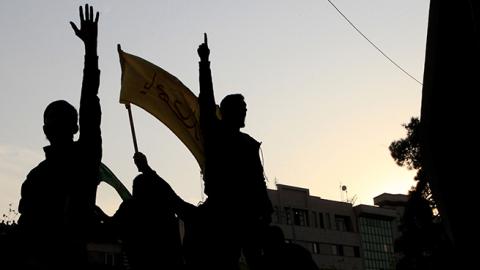It’s not often that a president has a chance to rewrite history and correct a blunder by one of his predecessors; to shoot an historic mulligan, as it were. But that’s what President Trump has in dealing with Iran this week: a chance to reverse the shameful failures of his predecessors in dealing with the Islamic Republic, and incidentally to rock the Middle East from end to end.
From the latest reports coming out of Iran, hundreds of thousands of protesters have poured into the streets of the country’s major cities, including the capital Tehran, calling for an end to a hardline mullah regime in demonstrations that have turned deadly—but which also show no sign of slowing down.
Rewind almost a decade ago to 2009, when thousands of Iranians also poured into the streets to protest the reign of the mullahs, and appealed to an American president for support. That president was Barack Obama, who was happy to talk about democracy and “Arab springs” if it helped to topple U.S. allies like Egypt and trigger civil wars in Libya and Syria, but not if it involved toppling the mullahs with whom he hoped to negotiate a dubious nuclear deal.
Instead, the Green Revolution was brutally crushed by the mullah’s armed thugs, as Obama’s obsession with getting a deal with Iran, and his delusion that a constructively engaged Iran could be a stabilizing factor in the Middle East, left him silent as protesters were mowed down in the streets.
Now we know better. Instead of becoming a stabilizing force, Obama’s Iranian partners have triggered instability and mayhem across the region, including sparking a proxy war with the Saudis over Yemen, stoking a vicious civil war in Syria, while also taking U.S. sailors hostage and giving the Taliban the weapons to kill Americans in Afghanistan—not to mention threatening Israel with annihilation.
With the revival of demonstrations in Iran, however, President Trump has an unprecedented opportunity to reset the U.S. policy toward the Islamic Republic. He’s already signaled his displeasure with the Iran nuclear deal; his tweets warning the mullahs that “the world is watching” are a further signal that he understands that the fate not only of Iran, but peace in the Middle East, depends on whether those demonstrators succeed or fail—and that the U.S. can act to help them succeed.
What steps can Trump take? First, reimpose all the sanctions against Iran that were lifted as part of the nuclear deal, especially against anyone that does business with the Iranian Revolutionary Guard Corps, the brutal elite mainstay of the Tehran regime.
Second, make it clear to the European Union and others who sit silent for fear their lucrative post-sanction deals with Tehran will fall through if the regime topples, that they will be held accountable to Washington and to history, if they stand by while one of the most despotic regimes in history once again crushes out the hopes of its citizens.
Third, show unflinching support for the demonstrators and show that America, and the world, are indeed watching and hails their effort to create a new life for themselves based on democracy and freedom.
The New York Times and Obama’s former UN ambassador Susan Rice say the best thing Trump can do about the demonstrations in Iran is to “be quiet.” That should be proof, if any is needed, that speaking up is the right thing to do, politically as well as morally.
This isn’t about imposing regime change. It’s about leveraging American pressure on a major sponsor of terrorism; on Vladmir Putin’s reliable client; on Bashar Assad’s chief protector; in ways that could usher in an entirely new and stable Middle East.
One hundred years ago President Woodrow Wilson had the chance to topple a shaky Bolshevik regime when the Russian people rose up against it in 1918, and failed. Like Obama, Wilson believed that America’s sworn enemies could be led to see the light through moderation and restraint. So Wilson withdrew the American troops who had landed in Siberia to keep Russia in the First World War; Lenin and the Communists survived; and over the next century tens of millions died. Today with Iran, the stakes may not be as high, but the opportunity has never been so ripe.
Trump says the world is watching. So is history, as are the spirits of the tens of thousands of Iranians murdered in three decades of tyranny—not to mention Americans and others murdered in terror bombings like the one in Beirut in 1983 that killed more than 200 U.S. Marines. Friedrich Nietzsche used to say when you see something slipping, give it a push. This is Trump’s opportunity in 2018 to give events a push, where and when it’s most needed.















